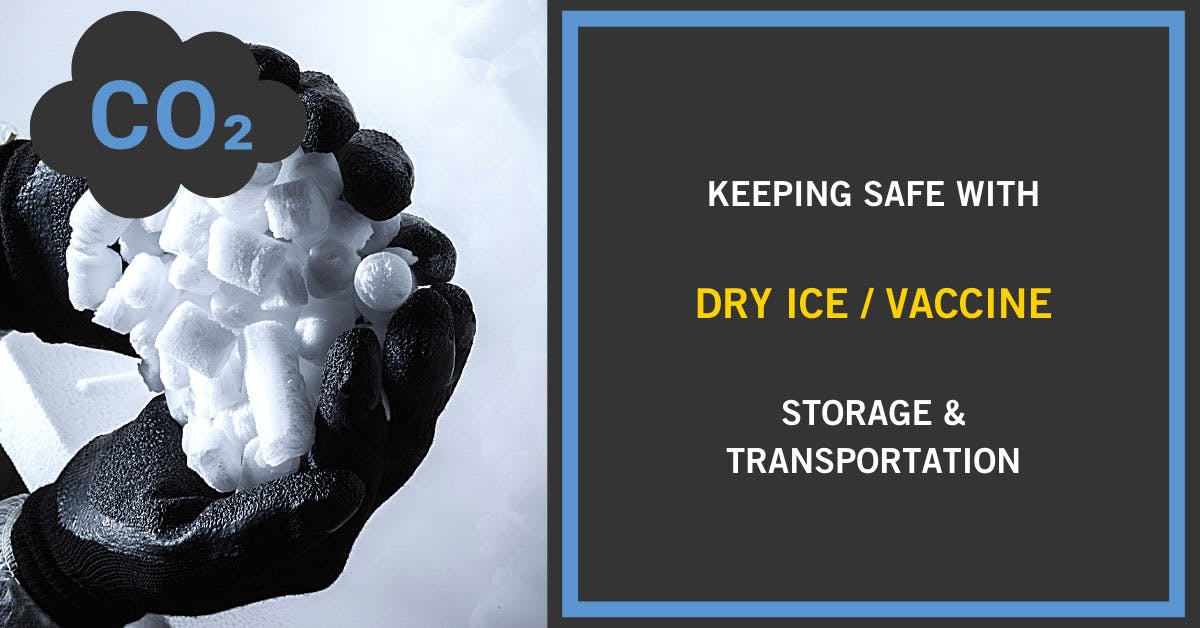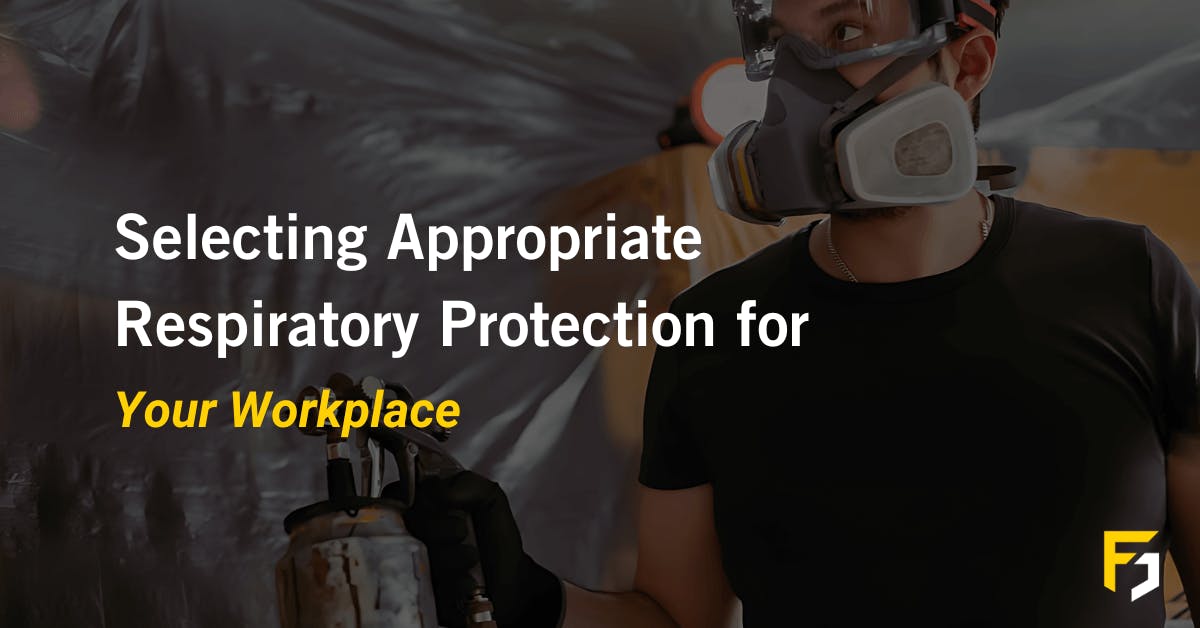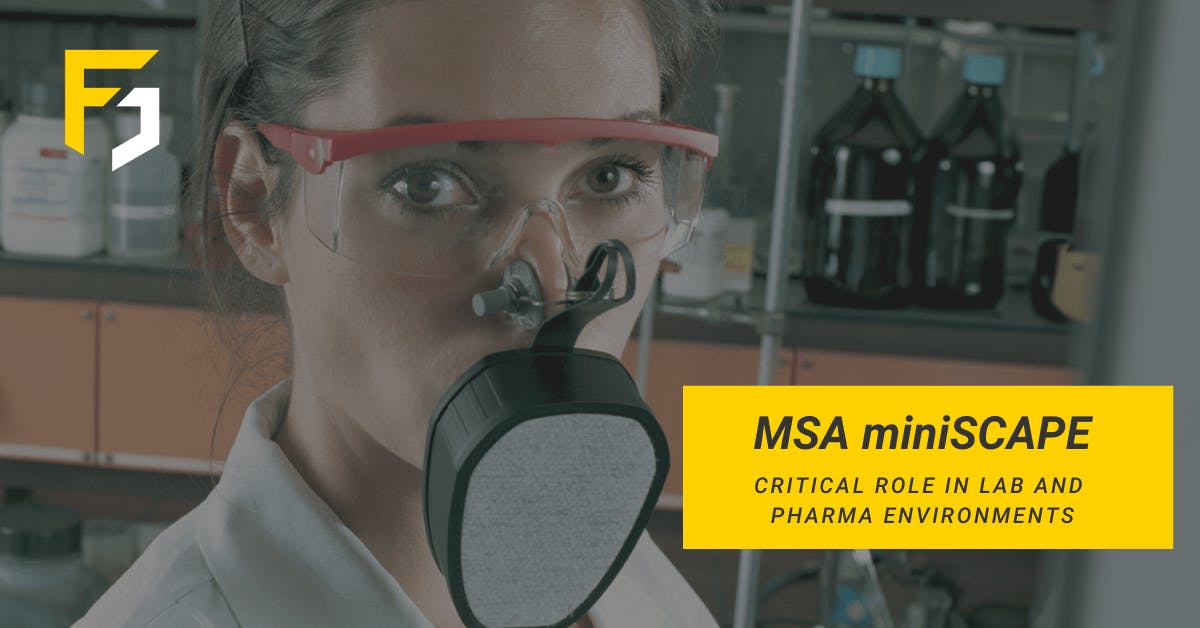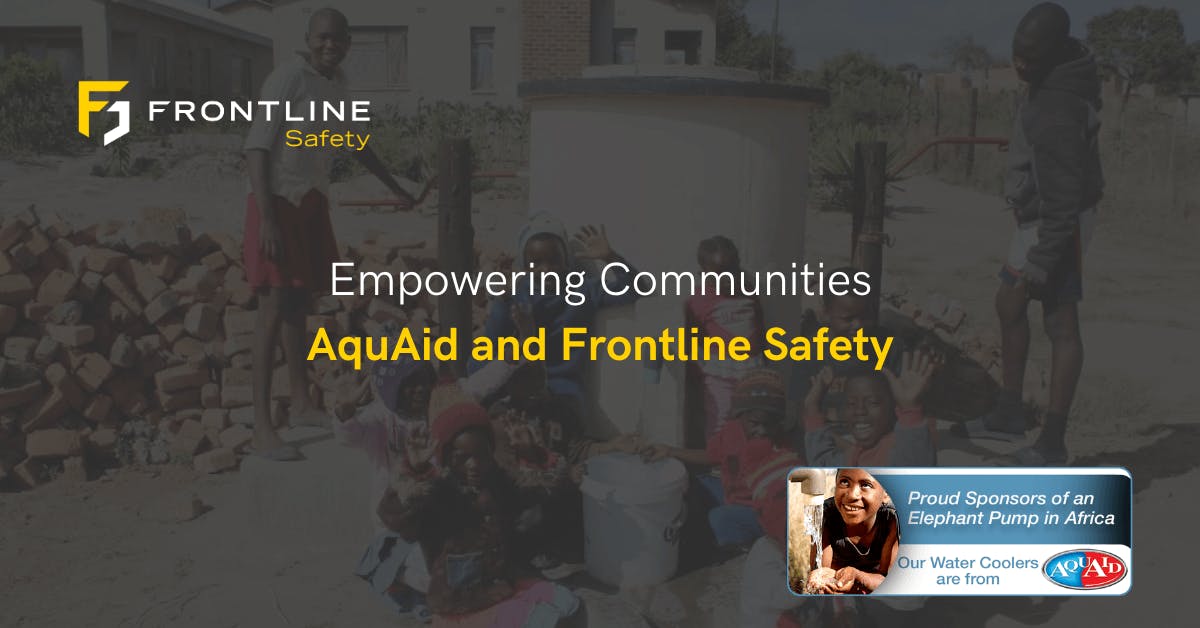
Keeping Safe with Dry Ice/Vaccine Storage & Transportation

In this short guide, we'll take a look at the hazards of dry ice/vaccine storage and transportation. Considering how to store and transport safely and adequate safety equipment to keep workers safe.
What is Dry Ice?

Dry Ice is made from Carbon Dioxide (CO2) cooled to a temperature of -78°C (-108.4°F). It's non-flammable and a colourless material that's available in blocks, pellets and flakes. It is regularly used in healthcare, in the storage of biological samples or medicines.
Dangers of Dry Ice
Carbon Dioxide (CO2) can be very dangerous in both gaseous and solid forms. You may be exposed to it via contact with eyes, mouth or skin, and even inhalation. We'll specify some of the dangers of dry ice below.
- Asphyxiation or Toxication - if dry ice heats up and exceeds the above temperature reaching temperatures above -70°C, -94°F it changes to CO2 gas. CO2 gas can replace air, reducing oxygen concentrations. Inhaling high concentrations of CO2 can lead to drowsiness, headaches, or in extreme cases loss of consciousness or death.
- Due to the extremely cold temperature of dry ice, it is dangerous to handle with bare hands and nitrile gloves. Direct contact with dry ice in these manners, can cause frostbite in a really short period.
- As mentioned, dry ice can sublimate to CO2 gas and if stored in a container, this will cause pressure to build in the container. Pressure in an airtight container could cause an explosion, possibly resulting in serious injury

Distribution of the COVID-19 Vaccine
The storage and transportation of the vaccine, requires a rigid cold chain, to ensure each vaccine is stored at the correct temperature. Temperatures in the fridges must be monitored and recorded at least once each working day, preferably twice. Documenting the maximum, minimum and, actual reading. Each COVID-19 vaccine has different storage temperatures and guidelines to adhere to during storage and distribution, some can be found here.
Protection for Handling
Sufficient safety gloves should be worn when handling vaccine shipments. Due to the extremely low temperature of dry ice, serious damage could be caused to those without the correct protection. Furthermore, facial protection should be considered. As workers may be exposed to dust, debris and chemical splashes, adequate facial protection such as safety goggles, and/or visors and face shields should be worn.
Monitoring Temperatures

The ETI ThermaGuard Pharm Thermometer has been designed specifically for use in monitoring the storage and transportation temperature of items such as vaccines. They feature an LCD display, which simultaneously displays the current, maximum and, minimum recorded temperatures. Additionally, it features programmable audible alarms, allowing high and low-temperature limits to be set. It uses thermistor probes as they are very effective due to their high sensitivity.
Risk of CO2 Exposure

To reduce the risk of exposure to CO2, workers can be supplied with a portable CO2 detector. These are easy to use and can be clipped to users breathing area, providing personal protection. We have a range of single gas detectors such as the Honeywell BW Solo, Drager Pac 8000, ToxiRAE Pro, and Crowcon Gasman, all capable of detecting CO2. These monitors can be easily operated and the large display can be seen while wearing PPE.
Breathing Apparatus

In the case of a leak or a situation that is possibly dangerous to life and health. Breathing apparatus should be nearby, for workers to use as a means of escaping or cleaning up the issue. Self-Contained Breathing Apparatus such as the MSA M1 SCBA set is the ideal solution for these types of situations. A lightweight and easy-to-use device with increased chemical resistance. It is easy to assemble and don and is the lightest SCBA with a height adjustment weighing less than 4kg.
Keeping Safe with Dry Ice
There are many more factors to consider such as container control, prevention of theft, vaccine track and trace, and increased CO2 detection. We have listed some of the key measures and levels of protection that should be considered during the storage and distribution of the COVID-19 vaccine. Workers should be made aware of the risks of hazardous materials and receive appropriate training to understand and identify the risks associated with dry ice.
If you have any questions, regarding storage and transportation, or the equipment mentioned in this article. Please leave a comment, or contact us at [email protected].





